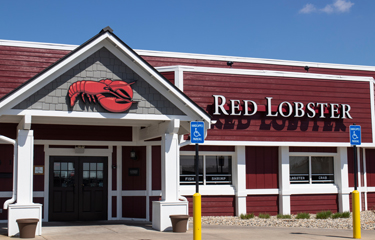Coronavirus forces Red Lobster to explore rent easements, refinancing options

Thai Union is looking at refinancing Red Lobster’s loans, reduced rent from landlords, and potentially closing some locations after the restaurant chain posted a USD 18.4 million (THB 579 million, EUR 15.6 million) loss in the fourth quarter.
The record losses were caused by having to close down all 600 dining rooms for a period of time, Thai Union Chief Financial Officer Joerg Ayrle said on an investor conference call.
Now, Red Lobster is looking at how it will refinance loans due in nine to 12 months and negotiate rent easements with landlords.
Landlords of Red Lobster restaurants in several states said the Orlando, Florida-based chain owes them several months’ worth of rent. Recently filed lawsuits show allege Red Lobster owes hundreds of thousands of dollars in back rent, KETK reported.
“Red Lobster is, of course, negotiating some rent abatements with the landlords. Some agreements were already taken,” Ludovic Regis Henri Garnier, Thai Union’s head of group accounting and control and general manager of corporate accounts, said on a conference call with investors.
Red Lobster may need to close some locations “if landlords are not understanding enough,” Thai Union Chief Financial Officer Joerg Ayrle said. “We need rental reductions. It is unreasonable of landlords to believe when nobody visits restaurants that you still get the same money … This is not how restaurants can operate.”
The restaurant chain engaged professional financial debt advisory firm, Guggenheim Partners and PPJ Solomon in the U.S. to help “find good ways” to refinance loans, Ayrle said.
“We are getting closer from the maturity. So it's a normal part of the business that we are starting the discussion on how do we want to refinance them,” Garnier said.
However, the loan refinancing is still nine to 12 months away, Ayrle noted.
“I think it's far too early to discuss how this will happen. Red Lobster has started discussing with several banks. They have started to reach out to the current term loan lenders, what their view is,” he said. “There is no discussion or anything about any requirement on [Thai Union] financial support. But look, of course, we are a large shareholder, and it would be irresponsible of us if we would decline discussions and if we would not reach out our hand and help our subsidiary and affiliated companies here.”
Since the COVID-19 pandemic began, Red Lobster has reduced its workforce, slashed overhead expenses 30 percent, and has made a “massive reduction” in marketing expenses, Ayrle said.
“In a crisis like that where you are minus 30 percent to 40 percent of revenue, you have to trim your functions. You have to trim in your organization,” Ayrle said.
While the second quarter loss is significant, Ayrle said Red Lobster’s performance was surprisingly positive given the unprecedented conditions it faced through the pandemic.
“I have to say this is a real amazing performance, and I have to thank the whole organization for driving through this period. Not an easy time for everybody, but I think we've done very, very well and managed very well,” Ayrle said.
More than 80 percent of Red Lobster’s dining rooms are currently open and all of its 600 locations are open for off-premise, to-go, curbside pickup, and delivery.
“And the delivery business is really doing very, very well,” Ayrle said. “And we are discussing how we can really push that even further with even more focus on this delivery consumer and delivery guest who has different needs than an on-premise dining hall guest.”
Through the crisis, Red Lobster has kept the safety of its customers and employees as a top priority, Garnier said.
“We clearly improved all the safety measures around the restaurant,” he said, naming touchless delivery, QR code menus, and expanded outdoor dining as some of the new processes added by the chain.
Red Lobster also streamlined its menu, as it was “too complex,” Garnier said.
“We took this crisis as an opportunity to really simplify the menu and to move to something which is much more simple,” he said.
The company has also been working on reducing its marketing and selling, general, and administrative expenses.
“You know that Red Lobster, before, they were working mostly through large events, the shrimp feast and stuff like this," Garnier said. "So we decided to remove this direction and to give much more reasons for the consumers to come every day to the restaurant. And I think it's also a good move."
Photo courtesy of Jonathan Weiss/Shutterstock






Share